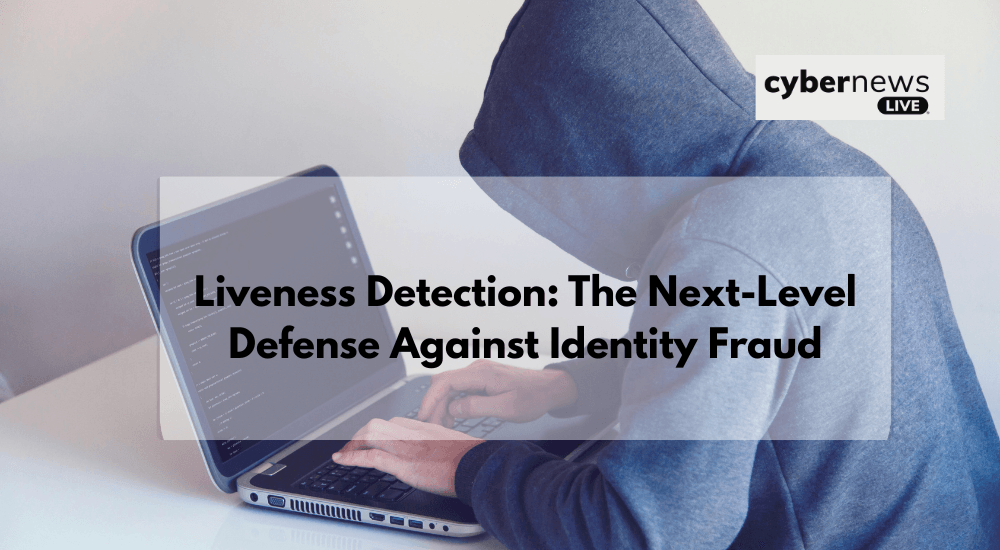
Liveness Detection: The Next-Level Defense Against Identity Fraud
As technology advances rapidly, concerns about online security have become increasingly prominent across all industries. The need for advanced authentication methods has never been greater, especially in regulated sectors that handle large sums of money or highly sensitive data, such as banking, insurance, and healthcare.
Security measures like biometrics, once considered nearly foolproof, now have vulnerabilities. This has led to a rise in identity-related threats, making verification a critical security challenge. To address this, liveness detection has emerged as a crucial layer of defense, helping to counter evolving threats and ensure that biometric authentication methods interact with a real, live person, not a spoof or synthetic representation.
Let’s examine liveness detection in detail.
What is Liveness Detection
Liveness detection is a technique used in biometric systems to determine whether the source of a biometric sample, such as a fingerprint, face, or iris, is a live human being rather than a spoof (such as a photo, video, mask, or synthetic image). This technology enhances traditional biometric authentication by adding a layer of anti-spoofing. Instead of just verifying a match, it verifies that the biometric sample is being provided by a real, present human at the time of authentication.
How Does Liveness Detection Work?
Liveness detection employs a variety of advanced methodologies to distinguish between a genuine, live human being and a spoofed or fraudulent biometric presentation. These techniques identify subtle physical or behavioral signs of life, making them critical in enhancing biometric system integrity. The principal methods used in liveness detection include:
Motion Analysis
Motion analysis examines natural, spontaneous movements that a live individual would exhibit during biometric capture. The system scrutinizes micro-expressions, eye blinks, slight head tilts, and other involuntary gestures that are difficult to replicate using static images or pre-recorded videos. For example, if an imposter attempts to authenticate using a photograph, the absence of nuanced movements, such as real-time facial expressions or subtle muscle contractions, will typically be detected, prompting the system to flag the attempt as non-genuine.
3D Depth Sensing
3D depth sensing is another crucial method for liveness detection. This method uses structured light or infrared sensors to construct a detailed 3D model of the user’s face. Unlike photographs or video recordings, which are inherently two-dimensional, a live person’s face will exhibit depth and spatial variation. This depth data allows the system to distinguish a genuine facial scan from an artificial representation.
Challenge Response Tests
Challenge-response protocols are an active liveness detection method. The system prompts the user, like blinking, turning the head, or repeating a phrase, and checks their real-time response. It analyzes timing and physical accuracy to verify that the user is live. This makes it hard for attackers to fool the system with photos or videos.
Texture Analysis
Texture analysis involves a detailed inspection of the surface characteristics of the biometric data, particularly skin texture in facial recognition. The system examines elements such as skin tone, pore patterns, and lighting consistency. High-resolution imaging can help detect anomalies such as reflections from glossy surfaces, inconsistencies in texture, or pixel patterns that differ from natural human skin. This layer of analysis strengthens the ability to distinguish live inputs from forgeries.
Benefits of Liveness Detection
Liveness detection offers several security benefits. Here are some specific benefits that this security method provides:
Improved Security
Liveness checks make it more difficult for fraudsters to bypass authentication mechanisms. It acts as a robust layer of defense within a broader identity verification framework. By requiring real-time proof of life, organizations can safeguard their systems and applications from impersonation attacks, making it more difficult for unauthorized individuals to exploit biometric data such as facial images, fingerprints, or voice recordings.
Fraud Reduction
Liveness detection plays a pivotal role in minimizing identity fraud. Verifying the authenticity of biometric submissions during key interactions prevents bad actors from using stolen or replicated biometric data to infiltrate systems. Preventing unauthorized access at the point of entry ensures malicious actors cannot carry out fraudulent activities, such as initiating unauthorized financial transactions, applying for loans, or creating synthetic identities.
Improved Customer Trust
Robust security measures, including liveness detection, increase customer trust and confidence. When users know that an organization employs advanced technologies to protect their personal data, they are more likely to remain loyal to the brand. This is especially critical for institutions such as banks, fintech platforms, and e-commerce providers, where customer trust directly influences business outcomes.
Conclusion
Liveness detection is a necessity in the digital age. By providing a robust defense against identity fraud, it safeguards users, businesses, and institutions from ever-more-sophisticated attacks. As biometric authentication becomes ubiquitous, liveness detection stands as the next-level shield, ensuring that only real, live individuals can access what matters most.
Security is non-negotiable in the digital age. Follow Cyber News Live for expert insights, breaking cyber threat alerts, and practical strategies to defend your digital world.


